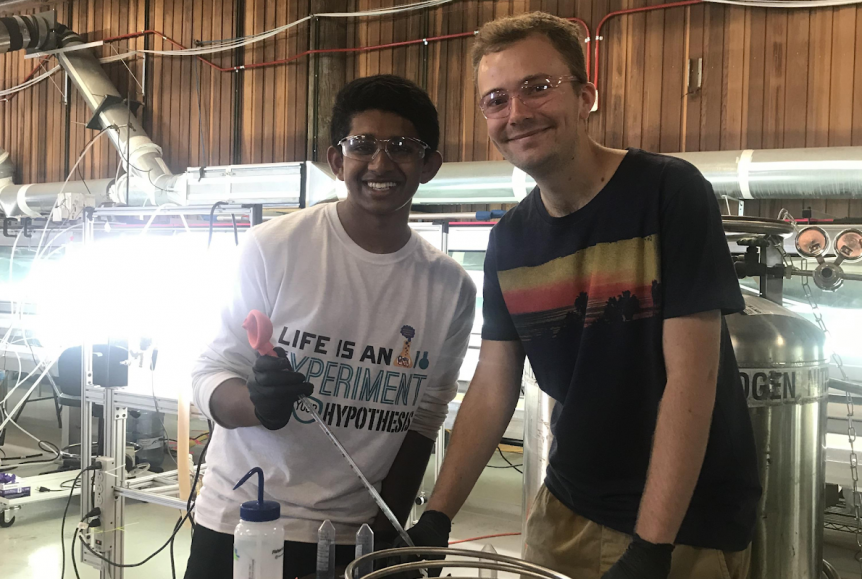Some of my happiest memories are of walking on the beach with my family. There is something so relaxing about being by the vast ocean and smelling the salty air. But even while relaxing, we have to be careful. Laying in the sun feels good, but too much of it is definitely bad. Is the same true for the air by the sea? How good or bad for our health is breathing in the sea spray from crashing waves?
This is a very involved question, and answering it correctly will require many little pieces to be understood first. My piece involves looking at some of the smaller aerosols emitted from the ocean and figuring out how acidic or alkaline they are. To do this, I first use an instrument called a MOUDI to separate the aerosols based on size, and then impact them onto litmus paper. I can then use computer methods to analyze the color and calculate a pH, that is, put a number on how acidic the aerosols are. This is key to our understanding of the safety of sea spray, since the most acidic aerosols are correlated with negative health effects. In particular, I am planning to track how aerosol acidity changes over the course of a bacterial bloom. Ultimately, this could allow us to predict ocean air conditions and determine which days are and are not safe for strolls along the beach.

In addition to allowing me to investigate some important scientific questions, being a member of SeaSCAPE has been very valuable to me personally. Until this summer, most of my past research projects have been largely solo efforts. Although I have always had supportive advisors, I performed most experiments by myself or with a single mentor. Initially, the thought of working with so many other people was very stressful to me. If I make a mistake and it only impacts me, that is fine, but it is much harder to forgive myself if I waste someone else’s time. Fortunately, everyone has been very supportive. Many people have gone out of their way to help me and teach me things, and despite the stresses and difficulties, I can always find plenty of smiles. Being here has made me more comfortable working with many different kinds of people and appreciate the power of a team effort coming together to achieve common goals. I am thankful for the opportunity to be part of the SeaSCAPE team and excited for the rest of the summer!

Written by: Kyle Angle, Grassian Research Group, Department of Chemistry & Biochemistry at UC San Diego
Header photo credit: Erik Jepsen/UC San Diego Publications

